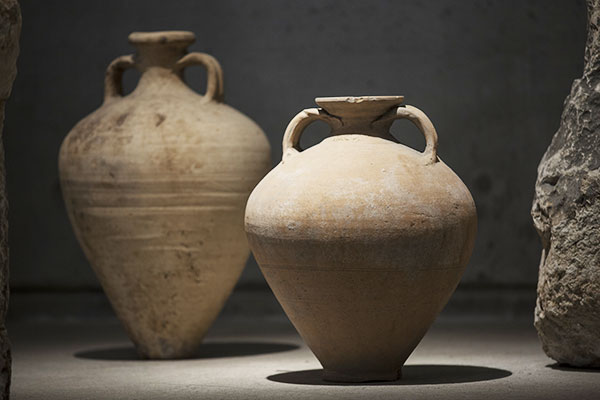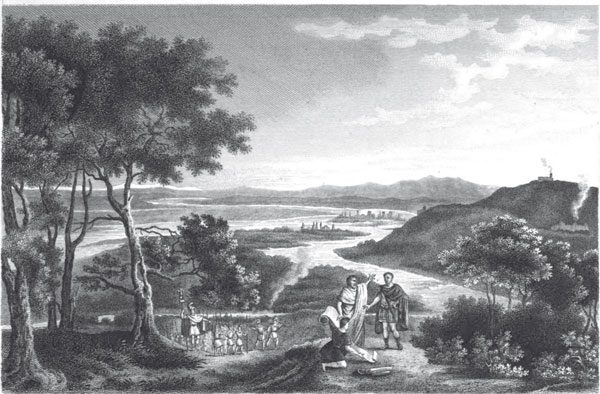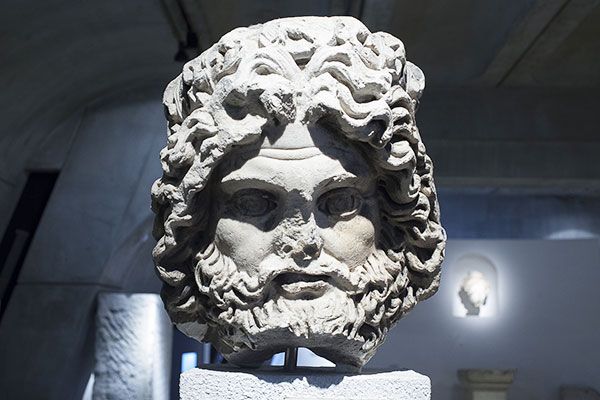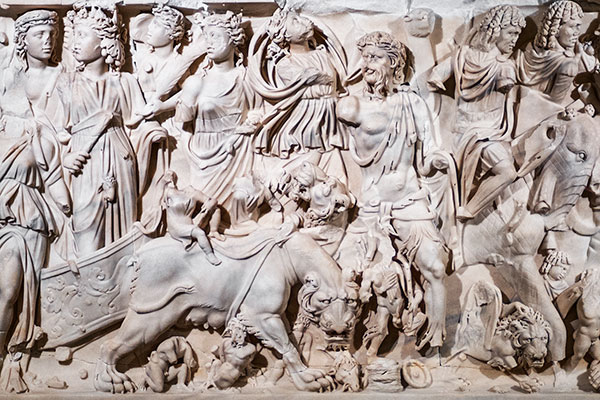Lyon before Lugdunum
Traces of the most ancient period of Lyon are concentrated along the Saône river on the Plain of Vaise (Lyon, 9th arrondissement).
The site was inhabited from the end of prehistory, around 12,000 B.C. Numerous discoveries attest to the presence of a sedentary community in the Neolithic era, starting in the fifth millennium. During the Bronze Age, a village was established around 1,200 B.C.
After a gap of several centuries, a small town had developed by the Early Iron Age at the end of the sixth century B.C. The presence of wine amphorae from Italy and Marseille, as well as Greek ceramics, are evidence of contacts with the Mediterranean world through the Rhône-Saône axis. Trade intensified during the Late Iron Age (450-50 B.C.).
The roman foundation
The history of Lugdunum starts in 43 B.C., nine years after Caesar had conquered Gaul and one year before his assassination in Rome, when Lucius Munatius Plancus, the governor of Gaul, was sent by the Senate to found a Roman colony.
The first inhabitants were Roman citizens, veterans of the army. Its status as a colony placed Lugdunum at the summit of the municipal hierarchy and would favor its future development. First established on the Fourvière plateau, the city would gradually spread to the river neighborhoods, the peninsula and the right bank of the Saône river.
The choice of this emplacement was strategic. The site of Lyon at the confluence of the Rhône and Saône placed it on an important axis of circulation through the Rhône Valley, which linked the Mediterranean to the future interior provinces. But major work was necessary to establish the city.
Lugdunum, capital of the province of Lyon
During the last decades of the first century B.C., a certain number of decisions made by Augustus, the first emperor (27 B.C. - 14 A.D.) gave rise to the rapid growth of Lugdunum. Augustus divided Celtic Gaul into three provinces: Lyon, Belgium and Aquitaine.
Lugdunum became the capital of the province of Lyon. The city was the site of administrative services shared by several provinces. It also became the headquarters of a major coin workshop that minted money for the whole empire. Agrippa, the son-in-law of Augustus, who was appointed by the Emperor to establish a roadway system, placed Lugdunum at the center of the Gallic network.
The city's reputation was enhanced with the creation in 12 B.C. of the Sanctuary of the Three Gauls, dedicated to the imperial cult. Located on Croix-Rousse Hill, it was the setting for the annual meeting of the 60 Gallic tribes that made up the Council of the Gauls.
War and peace in Lugdunum
The takeover of power in 41 by Emperor Claudius, who was born in Lyon in 10 B.C., corresponds to a phase of development of the colony, which took the name Colonia Copia Claudia Augusta Lugdunum. Lugdunum covered nearly 350 hectares and became one of the largest cities in Gaul.
Several emperors stayed in Lyon, most notably Hadrian in 119. Under the reign of Marcus Aurelius in 177, the Christian community was persecuted. Forty-eight martyrs died, including St. Pothin, one of the first bishops, and St. Blandine.
A few years later, in 197, the war of succession that opposed Septimius Severus, who had been proclaimed emperor by the Senate, to Clodius Albinus, governor of Britannia, ended at Lyon with a battle won by Septimius Severus. The city, which had defended his adversary, was subject to severe reprisals.
Late Antiquity : the new site of power
From the middle of the third century, part of the city began to decline. Fourvière Hill began to lose inhabitants.
At the end of the third century, during the reign of Diocletian (284-305) and following a reorganization of the provinces, Lyon lost its rank as a capital to Trier and the Council of the Gauls disappeared. The city now centered around the bishop's residence on the banks of the Saône, near the baptistery and Saint-Jean Cathedral.
In the upper part of the city, which was being abandoned, construction of funerary basilicas began in the late fourth century in connection with the cult of martyrs. Large cemeteries developed around them.
During your visit, stop at the digital scale model to discover the different steps in the evolution of Lyon.





